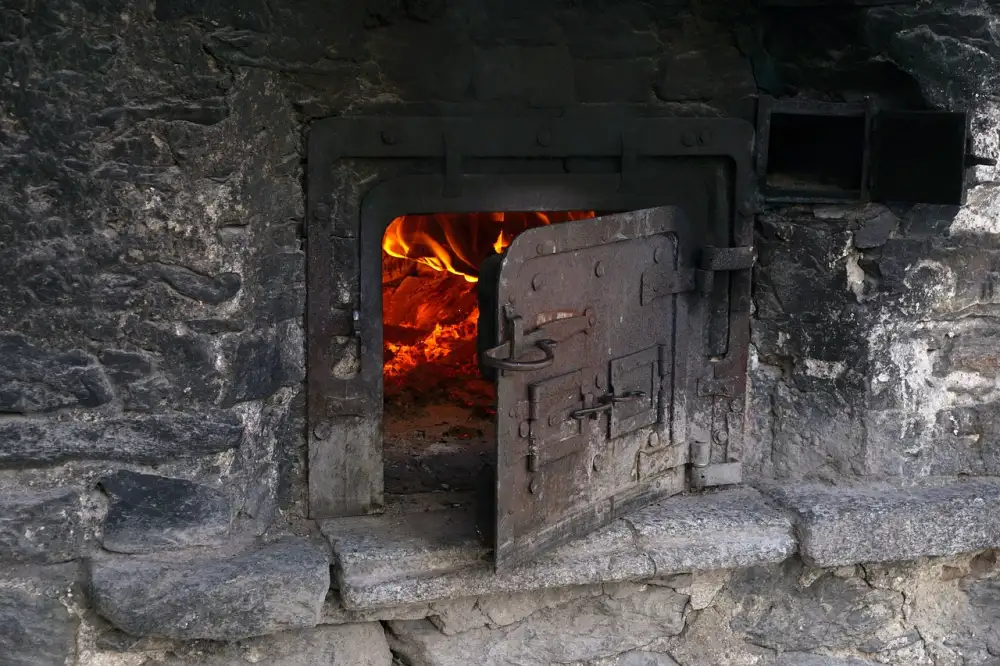Mastering Your Convection Oven: Essential Tips for Home Cooking Success

Convection ovens are a popular choice for home cooks looking to elevate their culinary skills. Unlike conventional ovens, convection ovens use a fan to circulate hot air, resulting in faster and more even cooking. This circulating air helps food cook more quickly, brown more evenly, and retain moisture better. By understanding how to properly utilize a convection oven, you can achieve professional-level results in your own kitchen. Mastering the art of convection cooking will open up a world of possibilities for creating delicious dishes with ease and precision.
Preheating the Convection Oven
Preheating your convection oven is a crucial step to ensure even cooking and optimal results. Unlike traditional ovens, convection ovens rely on the circulation of hot air to cook food efficiently. By preheating the oven to the desired temperature before placing your dish inside, you allow the air to reach its maximum heat level, which helps in achieving consistent cooking throughout. Most recipes recommend preheating the convection oven at least 10-15 minutes before starting to cook. This ensures that your food cooks evenly and in a timely manner, resulting in delicious dishes every time.
Adjusting Cooking Time and Temperature
When using a convection oven, it is important to adjust the cooking time and temperature to ensure optimal results. Due to the circulation of hot air in a convection oven, food tends to cook faster than in a conventional oven. As a general rule of thumb, you can reduce the cooking temperature by 25 degrees Fahrenheit and decrease the cooking time by about 25% when using a convection oven compared to a traditional oven recipe. It is recommended to start checking your food slightly earlier than the original recipe suggests to prevent overcooking. Experiment with different time and temperature adjustments based on your specific recipes for perfect results every time.
Positioning Cookware in the Oven
When using a convection oven, it's crucial to position your cookware correctly to ensure even cooking. For optimal results, place the cookware in the center of the oven rack, allowing for proper air circulation around the food. Avoid overcrowding the oven by leaving enough space between dishes to allow hot air to circulate effectively. Use shallow pans rather than deep ones to promote better airflow and more consistent cooking. Additionally, avoid covering the oven racks with foil or placing foil directly on the bottom of the oven as it can disrupt airflow and affect cooking performance. By positioning your cookware thoughtfully, you can maximize the benefits of your convection oven and achieve delicious results every time.
Using the Convection Setting Correctly
When using a convection oven, it is crucial to understand how to utilize the convection setting correctly for optimal results. The convection setting works by circulating hot air around the food, which helps to cook it more evenly and efficiently. To use this setting effectively, make sure to adjust the cooking time and temperature according to the manufacturer's guidelines. Typically, you can reduce the temperature by about 25 degrees Fahrenheit and decrease the cooking time by around 25% compared to a conventional oven. This adjustment ensures that your dishes are cooked thoroughly while saving time and energy. Be mindful of not overcrowding the oven with too many dishes as this can obstruct the airflow and lead to uneven cooking. By using the convection setting correctly, you can achieve delicious results with ease and precision.
Monitoring Food for Even Cooking
When using a convection oven, it's important to monitor your food for even cooking. The circulating hot air in a convection oven can sometimes cause certain areas of the food to cook faster than others. To ensure even cooking, rotate your pans halfway through the cooking process. This will help expose all sides of the food to the circulating air, resulting in a more uniform cook. Additionally, use an oven-safe thermometer to check the internal temperature of meats and baked goods to ensure they are cooked thoroughly. By keeping a close eye on your food while it cooks, you can achieve delicious and evenly cooked dishes every time.
Cleaning and Maintenance Tips
Cleaning and maintaining your convection oven is essential for optimal performance and longevity. To keep your oven in top condition, regularly remove any food spills or grease buildup inside the oven using a damp cloth or sponge. For tougher stains, use a mild detergent or baking soda paste. Remember to clean the oven racks separately with warm soapy water.
Additionally, it's important to clean the oven door and glass regularly to ensure visibility while cooking. Use a glass cleaner or a mixture of vinegar and water for streak-free results. Don't forget to wipe down the exterior of the oven with a damp cloth to remove any dust or residue.
To prevent odors, place a bowl of water with lemon slices in the oven and heat it at a low temperature for 30 minutes. This will help eliminate any lingering smells. Lastly, schedule regular maintenance checks with a professional technician to ensure all components are functioning correctly and efficiently. By following these cleaning and maintenance tips, you can enjoy delicious meals cooked in your convection oven for years to come.
Safety Precautions for Operating a Convection Oven
1. Keep the oven clear of any obstructions to ensure proper air circulation and prevent overheating.
2. Use oven mitts when handling hot cookware or when reaching into the oven to avoid burns.
3. Avoid placing flammable materials near the oven while it is in use to prevent fire hazards.
4. Do not operate the convection oven unattended, especially when cooking at high temperatures.
5. Always follow manufacturer's instructions for proper usage and maintenance of the convection oven.
6. Regularly check and replace any damaged cords or plugs to prevent electrical hazards.
7. Ensure adequate ventilation in the kitchen to disperse heat and fumes generated during cooking with the convection oven.
8. In case of any malfunction or unusual smells coming from the oven, immediately turn it off and seek professional assistance.
By following these safety precautions, you can enjoy using your convection oven efficiently while minimizing risks associated with its operation.
Published: 16. 03. 2024
Category: Home



